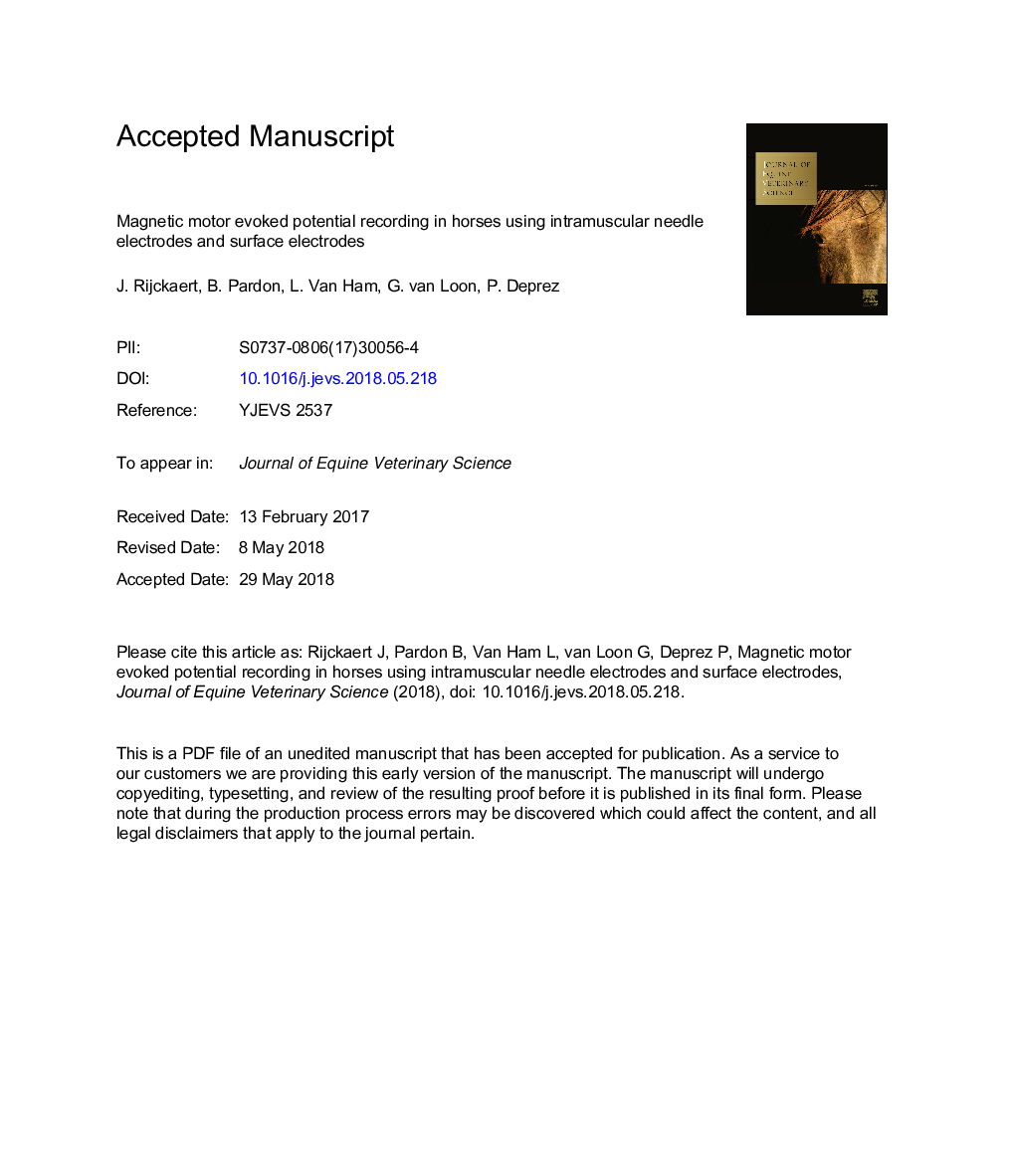| Article ID | Journal | Published Year | Pages | File Type |
|---|---|---|---|---|
| 8482553 | Journal of Equine Veterinary Science | 2018 | 23 Pages |
Abstract
To date, motor evoked potential (MEP) recording in animals is often performed using intramuscular monopolar needle electrodes. Their placement and use has several disadvantages. Adhesive surface electrodes appear to be attractive because they are painless and easy to place. Because these are not used in horses, a scouting study is performed to (1) explore the applicability of surface electrodes in horses (2) determine the repeatability of motor latency times (MLTs) and amplitude measurements, and (3) to investigate if MLTs and amplitude values of surface electrode recordings were similar to intramuscular needle electrode recordings. Transcranial MEP recordings were performed by both coated needle and surface electrodes on ten sedated warmblood horses. Mean MLTs for the thoracic limbs were 20.8 ± 1.5 ms for needle and 21.2 ± 1.4 ms for surface electrode recording and 39.4 ± 3.8 ms and 39.2 ± 3.8 ms for the pelvic limbs, respectively. Mean amplitude values were 8.3 ± 4.1 and 7.2 ± 4.7 mV for the thoracic limbs and 4.2 ± 3.1 and 3.8 ± 2.4 mV for the pelvic limbs, respectively. A good agreement and repeatability for MLTs but insufficient agreement and repeatability for amplitude between both recording types were determined by Bland-Altman plots and Passing-Bablok regression and coefficients of variation calculation. In conclusion, this preliminary study shows that surface electrode recording of MEP is possible and well tolerated in horses. Surface recordings were repeatable and look similar to the intramuscular recordings when regarding MLTs, but overshadowing effects of large test-to-test variations precluded a conclusion concerning amplitude.
Related Topics
Life Sciences
Agricultural and Biological Sciences
Animal Science and Zoology
Authors
Joke Rijckaert, Bart Pardon, Luc Van Ham, Gunther van Loon, Piet Deprez,
